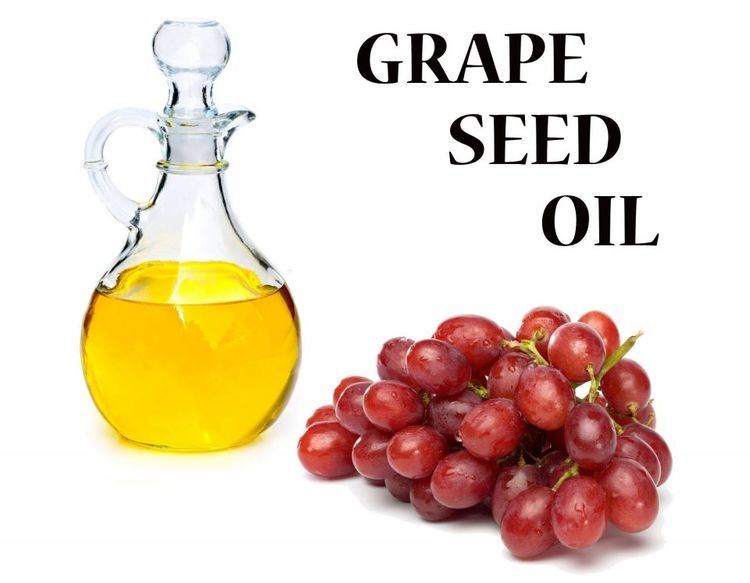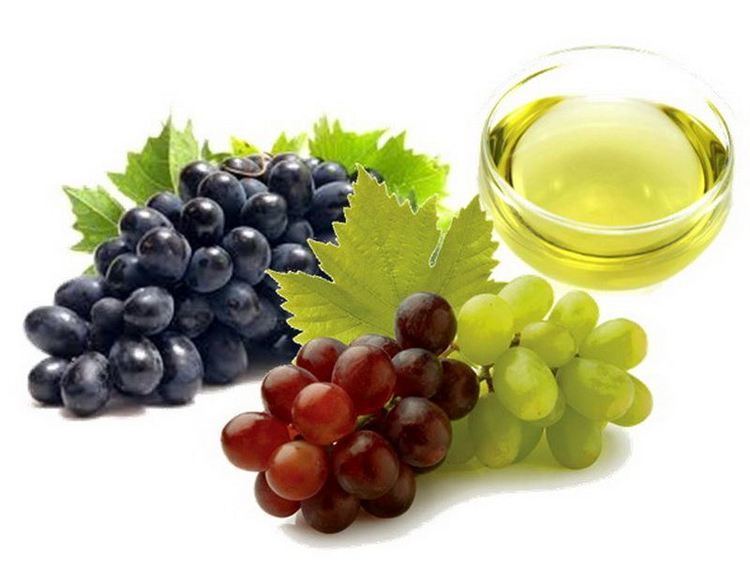Total unsaturated 86% Palmitoleic acid <1% Polyunsaturated 69.9% | Monounsaturated 16.1% Oleic acid 15.8% | |
 | ||
Similar Seed oil, Jojoba, Avocado oil, Shea butter, Jojoba oil | ||
Grape seed oil (also called grapeseed oil or grape oil) is pressed from the seeds of grapes, and is thus an abundant by-product of winemaking.
Contents

Grape seed oil vs olive oil
Cooking

Grape seed oil has a moderately high smoke point of approximately 216 °C (421 °F). Due to its clean, light taste, and high polyunsaturated fat content, it may be used as an ingredient in salad dressings and mayonnaise and as a base for oil infusions of garlic, rosemary, or other herbs or spices. It is widely used in baked goods, pancakes, and waffles. It is sprayed on raisins to help them retain their flavor.

The metabolic energy density of grape seed oil is typical of vegetable oils: approximately 3,700 kJ (880 kcal) per 100 g, or 500 kJ (120 kcal) per 15 ml tablespoon.
Research
A study of 21 grape cultivars showed variation of oil composition, especially for linoleic acid and tocopherols.

Although grape seeds contain polyphenols, such as proanthocyanidins, grape seed oil contains negligible amounts of these compounds. Grape seed oil components are under study for their potential applications in human health, but the scientific quality of clinical research as of 2016 has been inadequate to suggest any effect on lowering disease risk.
Potential medicinal complications
Grapeseed oil has occasionally been found to contain dangerous levels of polycyclic aromatic hydrocarbons because of direct contact with combustion gases during the drying process.
Composition
The following table lists a typical fatty acid composition of grape seed oil:
Grape seed oil also contains 0.8 to 1.5% unsaponifiables rich in phenols (tocopherols) and steroids (campesterol, beta-sitosterol, stigmasterol). Grapeseed oil contains small amounts of vitamin E, but safflower oil, cottonseed oil, or rice bran oil contain greater amounts. Grapeseed oil is high in polyunsaturates and low in saturated fat.
